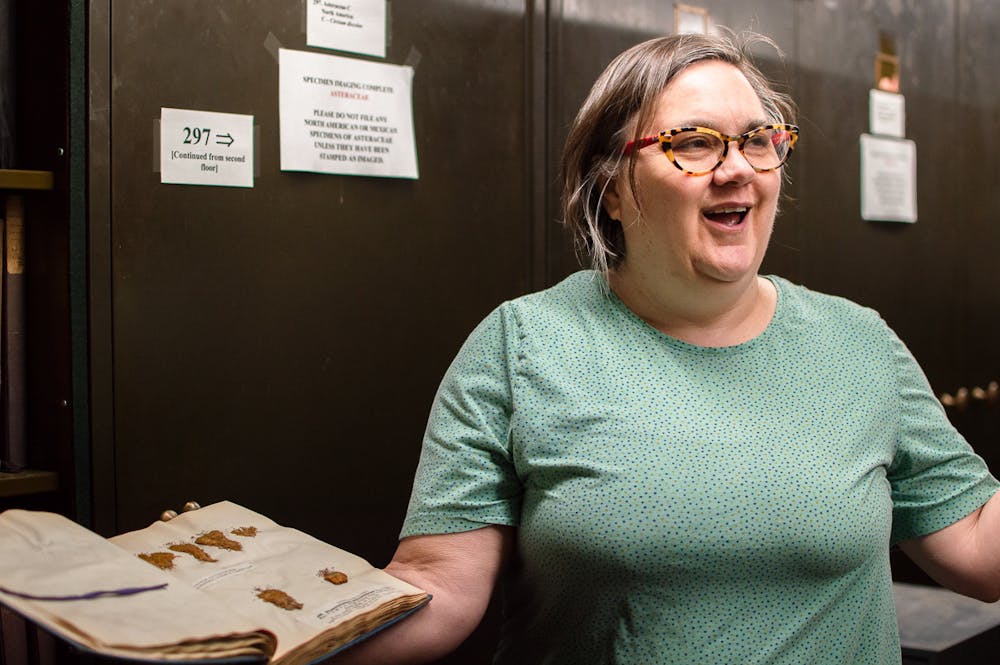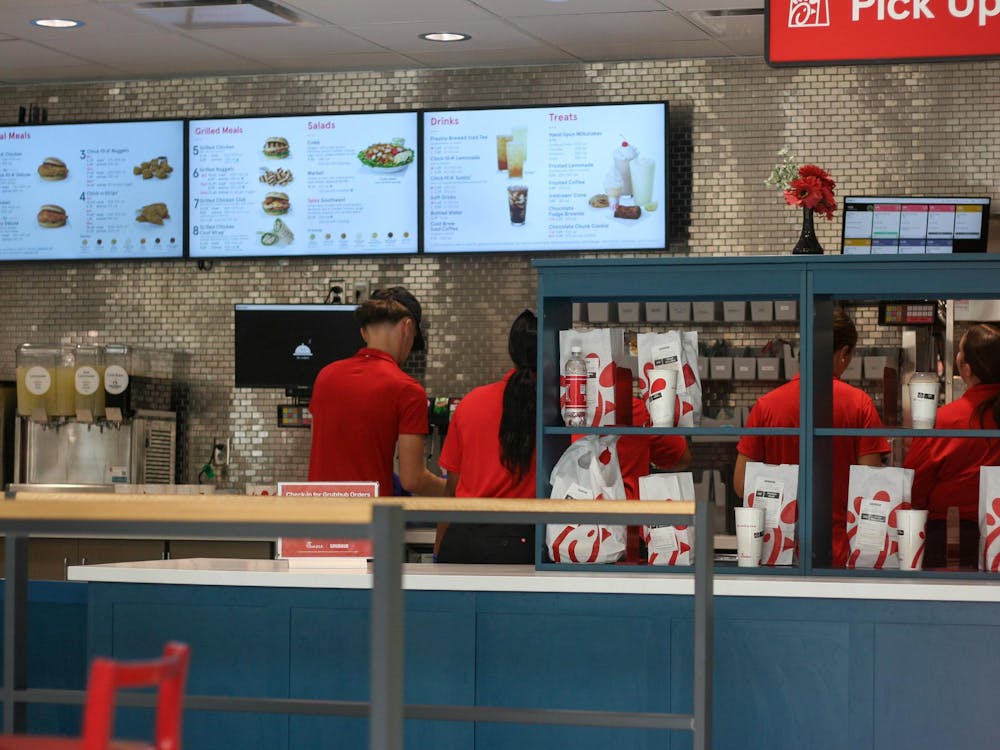Tucked away on the ground level of Upham Hall, more than 300 metal cabinets, filled to the brim with manila folders, spread across three floors. Although bland on the outside, the inside contains a treasure trove of dried plant specimens collected from some of the most remote places on the globe.
The Willard Sherman Turell Herbarium features more than 660,000 pressed and dried specimens from all over the world, all housed on Miami University’s campus for students, researchers and anyone interested in observing and studying to access.
“[The herbarium] is one of those unspoken gems that a lot of people don’t know about,” said Richard Moore, a botanist and associate professor who has contributed to the herbarium.
The collection, which contains species dating back to the 1790s, officially started in 1906 with the appointment of Bruce Fink, a lichenologist and the first professor of botany at Miami. A different herbarium previously existed under Joseph James, who taught in the 1870s but was later removed from his position.
The herbarium is home to a variety of specimens, including vascular plants, fungi, mosses, liverworts, algae and various plant fossils. It also includes special collections of type specimens — specimens that serve as a reference point for defining a new species — along with a wood collection, stem and root sections and pollen.
“[Miami’s herbarium] is unique in that it is the largest and one of the oldest in Ohio,” Gretchen Meier, the herbarium curator, said. “It’s in the top 10% of the country. So it’s a very good herbarium … for a college this size.”
Plants are picked as specimens for the herbarium if they are in good condition and show key characteristics of the species. They are taken from the wild and brought back to Upham Hall for documentation.
The process for documenting a specimen first includes drying and pressing a specimen to avoid shriveling. The rest of the process involves mounting them to archival paper, digitally imaging the specimens to include in the database, sorting them into the collection and creating labels that include the name, habitat and collection information for the database.
This task isn’t just reserved for professional botanists. Students are also involved, with the herbarium currently employing four students to help with this process.
Moore, who teaches BIO 302 plant taxonomy and BIO 206 evolutionary biology, has incorporated the herbarium into his teaching. Meier and Moore worked together to create a teaching collection where student specimens collected from class can be deposited into the herbarium and the teaching lab.
“We can bring [the student specimens] out to teach in the classroom,” Moore said. “That’s the more active learning part of the class. Another component is learning about plant families [and their] characteristics … We can pull specimens from around the world that students can look at.”
Enjoy what you're reading?
Signup for our newsletter
Moore and his students collect specimens from Bishop Woods, right in the center of campus, and document the ecological changes happening in the area.
“We’re trying to get a record of Bishop Woods and get an idea of how these management practices affect what types of plants grow there,” Moore said. “Fifteen years ago when I started, Bishop Woods looked like … the Natural Areas … and now the species composition has changed a lot.”
All the plant specimens in the collection, and others around the Midwest, can be found via the Consortium of Midwest Herbaria. Staff at the herbarium are currently working on making a database specifically for Miami, citing software upgrades as the reason its database is currently unavailable.
According to its website, the collection has nearly doubled in size since 1993, with specimen holdings from Latin America, Africa, Asia and the Pacific basin increasing by 500%.
The herbarium is located at 79 Upham Hall, and the collection is open to visitors from 9 a.m. - 4 p.m. every day, according to Meier.
“It’s hard to see beauty in metal cabinets, but if you take the time to look at them, there’s magic,” Meier said. “It’s pretty cool what you can find in here.”




